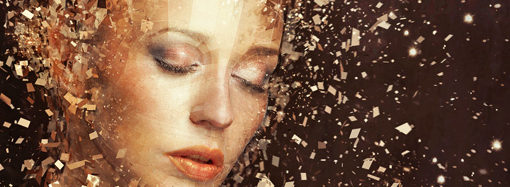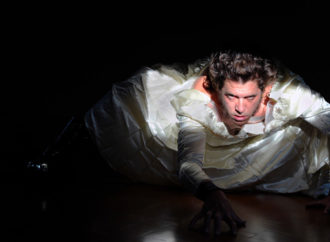The Legend of the Red Haired Women: “Red-haired barbarians” and “red-haired devils,” with which the Chinese were formerly in the habit of designating the English, it is evident that with them a similar strong antipathy prevailed to this unfortunate, and ill-omened, color of the hair.

Red Haired Girls
The gold and topaz of the sun on snow
Are shade by the bright hair above those eyes.
— PETRARCH
WHY red hair has been at a discount in all ages has perplexed many a chronicler of fashion. Although, it is true, artists have more chivalrously depicted its beauty, the reverse is the case in literature. What poet, it may be asked, has ventured to sing of “the fair one with the ruddy ringlets” in the same way as the charms of the dark-haired maiden have been so often described?
Whereas the jetty ringlet or flaxen plait has won a thousand admirers, the red-haired girl has found herself persistently passed by. However good and attractive her features, and however graceful her gait may be, she has rarely found her praises acknowledged. Fashion, hitherto, has boycotted in a most unrelenting manner the girl with hair of reddish hue; and, despite the fact that in years gone by many beautiful women possessed tresses of this unaristocratic color, it still remains unpopular.
It is useless to urge in its favor that Queen Elizabeth considered herself to make the best appearance when wearing a red wig, and that others, counting themselves stars of fashion, have been of the same opinion; for there is a deep-rooted and unaccountable prejudice against this much-abused shade of color, which it is quite possible some unexpected freak of fashion may one day change. Indeed, from time immemorial, the girl so endowed by Nature has been, in most places, open to sarcasm, and rude unsympathetic passers-by have contemptuously spoken of “carrots” by way of a joke. An old epigram running thus:–
Why scorn red hair? The Greeks, we know
(I note it here in Charity),
Had taste in beauty, and with them
The Graces were all ‘Charital.’
For years past barbers have advertised various compositions for altering the red shade of the hair, and some time ago a high German doctor and astrologer informed the public that he was blessed with a wife “who could make red hair as white as a lily.”
A lady whose lover had an unconquerable antipathy to red hair once applied to a noted quack for help in her emergency, who politely answered:–“This is no business of mine, but my wife’s, who’ll soon redress your grievances and furnish you with a leaden comb, and my anti-Erythraean unguent, which after two or three applications will make you as fair, or as brown, as you please.” According to an American newspaper paragraph, twenty-one men in Cincinnati, who had married red-haired women, were found to be color blind, thus mistaking red for black.
But, going back to the antecedent history of this strange prejudice, it may be traced to a very early period. The Ancient Egyptians, for instance, seem to have been pre-eminent among all nations for their aversion to red-haired people. According to early authorities they were in the habit of annually performing the ceremony of burning alive an unfortunate individual whose only crime was the color of his hair. “Fancy,” as it has been remarked, “the state of mind into which every possessor of the obnoxious shade must have been thrown at the approach of the dreaded ceremony, each not knowing who might be selected as the victim.”
From the epithets “red-haired barbarians” and “red-haired devils,” with which the Chinese were formerly in the habit of designating the English, it is evident that with them a similar strong antipathy prevailed to this unfortunate, and ill-omened, color of the hair.
On the other hand, the Romans, from the days of Nero to the present, have been unstinted in their praise of red hair–with the old Romans the colour more esteemed being a dark red, almost brown. Modern Romans, it is said, inherit “the tastes of their ancestors in this respect; and nowhere else on the face of the earth are so many red-haired women to be found as among the patrician families of Rome and Florence. The same liking exists among modern Greeks, who strive to accentuate the burnished effect of their reddish tresses by the wearing of dull gold ornaments.”
The Laura whom Petrarch has immortalized attracted him by the colour of her tresses. He first saw her in church clad in a mantle of green, over which her golden red hair fell, which inspired him to write these lines:–
The snare was set amidst those threads of gold
To which Love bound me fast,
and in another of his songs he says of his lady-love’s hair–
The gold and topaz of the sun on snow
Are shade by the bright hair above those eyes.
Spanish artists look with no favor on a red haired woman, and for two reasons. First, because red hair is in direct opposition to that of the Castilian women, who form the class ideal of feminine beauty to the people of that country. The second reason may be attributed to the old tradition which has led them always to portray Judas as a man with red hair. The same prejudice prevails in France, and Thiers, in his “Histoire des Perruques,” gives this as one of the reasons for wearing a wig:–“Les rousseaux porterent des perruques pour cacher la couleur de leur cheveux, qui sont en horreur a tout le monde, parceque Judas, a ce qu’on prétend étoit rousseau.” Hence there is an old French adage to this effect:–
Homme roux et femme barbe,
Da trente pas loin le salue,
Avecques trois pierres au poing,
Pour t’en aider a ton besoign.
In our own country, the literature of past years contains many similar allusions. In “As You Like It,” Rosalind, speaking of Orlando, says “His very hair is of the dissembling color;” whereupon Celia replies, “Something browner than Judas’s.” Southey, in his “Vision of the Maid of Orleans,” after having taken the poor girl to a number of unpleasant places, introduces her to the following disagreeable personage:–
From thence they came
Where, in the next ward, a most wretched band
Groaned underneath the bitter tyranny
Of a fierce demon. His coarse hair was red,
Pale grey his eyes, and bloodshot, and his face
Wrinkled with such a smile as malice wears
In ecstasy.
This demon, of course, is Cruelty, into whose charge are committed all those who have been guilty of cruelty in their lifetime. Shirley, in his “Doubtful Heir,” expresses the same idea, as also does Dryden, in his play of “Amboyna.” Middleton, too, in his “Chaste Maid of Cheapside,” has a similar allusion, showing how popular and widespread was the prejudice to this unfortunate colour; indeed, so much so, that there is some raason to think that the devil himself had occasionally this attribute bestowed upon him.
The Brahmins were forbidden to marry a red-haired woman; and, as it has been remarked, “the populace of most countries, confounding moral with aesthetic impressions, accuses red-haired people of various shortcomings.” Hence, superstition has assigned to hair of a coppery tinge, when it adorns a woman’s head, the worst traits; and “all the petty vices, all the lamentable shortcomings to which femininity is heir have been laid to the charge of the reddish crown.” Of course this is only prejudice; and as the author of the “Ugly Girl Papers” writes, “I have seen a most obnoxious head of colour so changed by a few years’ care that it became the admiration of the owner’s friends, and could hardly be recognised as the withered, fiery locks once worn.” At the same time there seems some truth in the common opinion that a red-haired girl is invariably self-conscious; for she knows that her hair, although it may not be of a fiery carrot colour, is the subject of daily comment.
Referring to the colour of the hair in folk-lore, we may note that from time immemorial there has been a strong antipathy to red hair, which, according to some antiquarians, originated in a tradition that Judas had hair of this colour. One reason, it has been suggested, why the dislike to it arose was that it was considered ugly and unfashionable, and on this account a person with red hair would soon be regarded with contempt. It has been conjectured, too, that the odiuu took its rise from the aversion to the red-haired Danes.
Yellow hair was, also, in years gone by, regarded with ill-favour, and almost esteemed a deformity, allusions to which prejudice are of constant occurrence; and, it may be added, that hair was often used metaphorically for the colour, complexion, or nature of a thing, as in Beaumont and Fletcher’s “The Nice Valour”–
“A lady of my hair cannot want pitying.“
Previous / The Folk-Lore of Women / Next
Part of the collection of – A Wrinkle In Time
Backed Up and Credited by – no-maam.blogspot.com
































Leave a Comment
Your email address will not be published. Required fields are marked with *